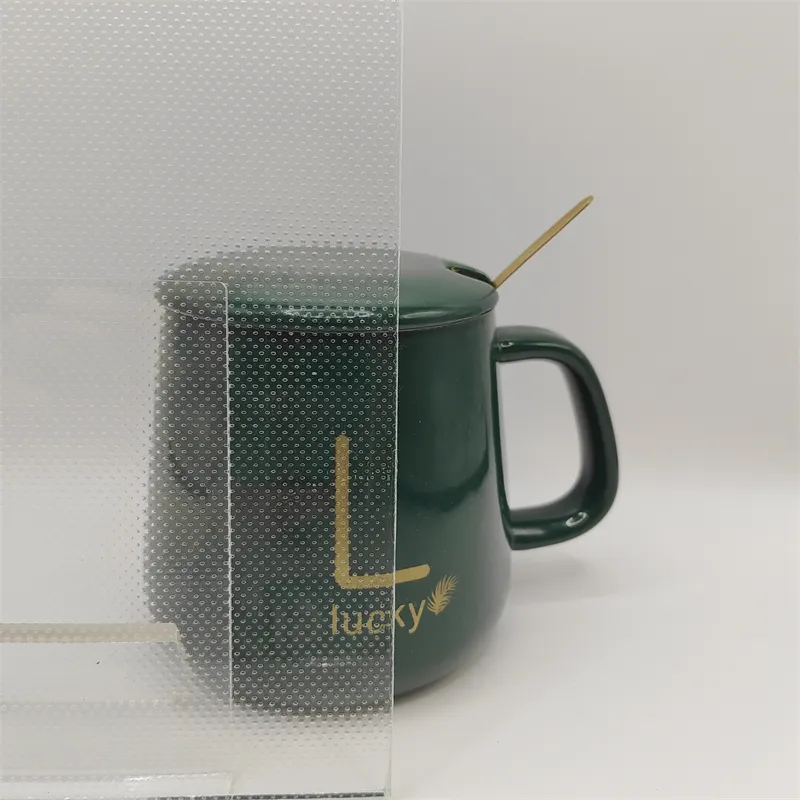Dec . 15, 2024 07:28 Back to list
textured glass patterns
The Art and Utility of Textured Glass Patterns
In the world of design and architecture, the texture of materials plays a pivotal role in defining the aesthetics and function of spaces. Textured glass patterns, in particular, have gained significant popularity for their ability to balance light, privacy, and beauty. This article delves into the various aspects and benefits of textured glass patterns, exploring their applications in both residential and commercial settings.
Understanding Textured Glass
Textured glass, also known as patterned glass, is produced by creating designs on the surface of the glass through various manufacturing techniques. This can involve the use of molds, rollers, or acid etching to create an array of textures, from subtle ripples to bold geometric shapes. The end result is a glass panel that not only serves its primary purpose—allowing light to pass through—but also enhances visual interest and tactile quality.
The Aesthetic Appeal
One of the most compelling aspects of textured glass is its aesthetic versatility. The patterns can range from simple, frosted designs that diffuse light softly, to intricate motifs that invite closer inspection. For instance, a leaf pattern may evoke a natural ambiance perfect for a garden room, while angular lines can suggest modernity in an urban loft. As a decorative element, textured glass adds depth and character to windows, doors, and room dividers, making everyday spaces feel more sophisticated and inviting.
Light and Privacy
Another significant advantage of textured glass is its ability to manipulate light and maintain privacy. Unlike clear glass, which can create an open and exposed atmosphere, textured glass diffuses light in unique ways, transforming bright sunlight into a gentle glow. This soft light creates an enchanting ambiance in various settings, from homes to offices.
Moreover, textured glass is an excellent choice for spaces that require privacy, such as bathrooms, conference rooms, or doctor’s offices. By obscuring the view while still allowing natural light to stream in, it strikes a perfect balance between openness and seclusion. This makes it a popular element in contemporary architecture, where the desire for natural light is often juxtaposed with the need for privacy.
textured glass patterns

Practical Applications
Textured glass patterns find their way into numerous applications across different industries. In residential settings, they are commonly used in shower doors, bathroom windows, and interior partitions, providing functional benefits without sacrificing style. For instance, a patterned glass shower door can prevent prying eyes without diminishing the overall aesthetic of a beautifully designed bathroom.
In commercial environments, textured glass is equally valuable. Offices often employ it for conference room dividers, allowing light to flow through while maintaining a level of confidentiality essential for business communications. Retail spaces also benefit from decorative glass, using it in storefronts to create an eye-catching display that protects products while enticing customers.
Sustainability and Innovation
The production of textured glass has evolved, focusing on sustainable practices and innovations. Many manufacturers use recycled materials in their glass production processes, contributing to eco-friendliness. Additionally, energy-efficient glazing options are increasingly available, reducing the environmental impact while enhancing thermal performance.
Innovations in glass technology also mean that textured glass can be integrated with smart technologies, allowing for dynamic control over transparency and light filtration. This blending of art and technology opens new avenues for creative expression and functionality in both residential and commercial projects.
Conclusion
Textured glass patterns represent a harmonious blend of artistry and utility, making them an invaluable asset in modern design. Their capacity to transform ordinary spaces into extraordinary environments—while providing essential benefits like light diffusion and privacy—cannot be overstated. As sustainability and technological innovation continue to advance, the future of textured glass promises to be even more exciting, opening doors to endless possibilities in architectural design. Whether in homes or businesses, the beauty and functionality of textured glass patterns are sure to continue captivating designers and users alike for years to come.
-
Safety and Style with Premium Laminated Glass Solutions
NewsJun.24,2025
-
Reinvents Security with Premium Wired Glass
NewsJun.24,2025
-
Premium Float Glass Line for Modern Architecture
NewsJun.24,2025
-
Low Emissivity Glass for Energy-Efficient Architecture
NewsJun.24,2025
-
High-Performance Insulated Glass Solutions for Modern Architecture
NewsJun.24,2025
-
Elevates Interior Style with Premium Silver Mirror
NewsJun.24,2025
Related PRODUCTS














